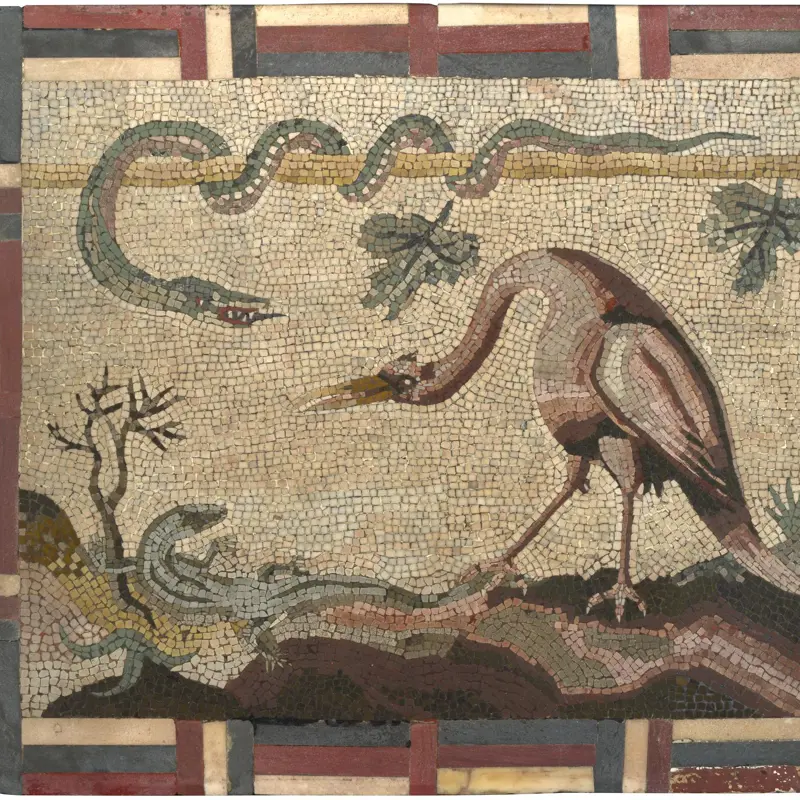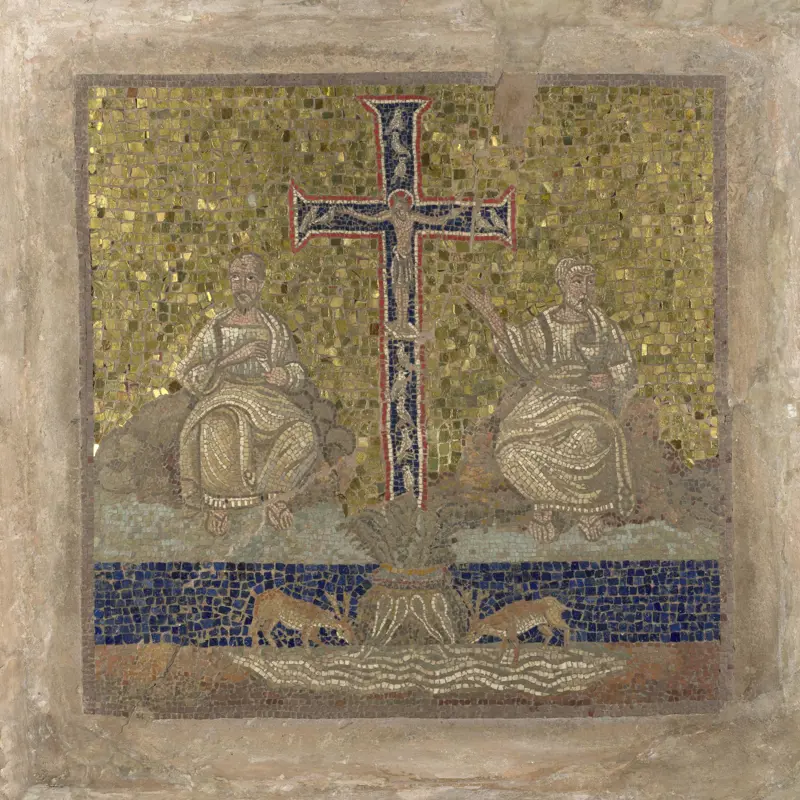Italian, Roman, 'Portrait of the Abbate Carlo Bartolomeo Piazza', late 17th century
About the work
Overview
A man with a distinctive beard and moustache sits in a chair looking out. He wears a black ecclesiastical robe and holds a geometric compass in his left hand. On the table to the left is an armillary sphere and a sheet of paper with a horoscope, on which rests a book inscribed along the edge of its pages: Efemer (the last letter is not certain).
The inscription on the book allows the sitter to be identified as Carlo Bartolomeo Piazza (1632–1713), an erudite Milanese priest who had a successful career in the Roman Curia (papal court) and who published extensively. His Efemeride Vaticana, an illustrated calendar of saints, was published in Rome in 1687.
When this painting was bequeathed to the National Gallery in 1908, it was thought to be a portrait of the astronomer Galileo Galilei by the Florentine painter Domenico Cresti, called Passignano (1558–1638). Given the identification of the sitter and Piazza’s probable age, the portrait was most likely painted in Rome in the late seventeenth century.
Key facts
Details
- Full title
- Portrait of the Abbate Carlo Bartolomeo Piazza
- Artist
- Italian, Roman
- Date made
- late 17th century
- Medium and support
- oil on canvas
- Dimensions
- 113.7 × 83.8 cm
- Acquisition credit
- Bequeathed by George Fielder, 1908
- Inventory number
- NG2294
- Location
- Not on display
- Collection
- Main Collection
Provenance
Additional information
Text extracted from the ‘Provenance’ section of the catalogue entry in Michael Levey, ‘National Gallery Catalogues: The Seventeenth and Eighteenth Century Italian Schools’, London 1986; for further information, see the full catalogue entry.
Bibliography
-
1986Levey, Michael, National Gallery Catalogues: The Seventeenth and Eighteenth Century Italian Schools, London 1986
-
2001
C. Baker and T. Henry, The National Gallery: Complete Illustrated Catalogue, London 2001
About this record
If you know more about this work or have spotted an error, please contact us. Please note that exhibition histories are listed from 2009 onwards. Bibliographies may not be complete; more comprehensive information is available in the National Gallery Library.


